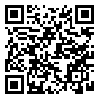1. Seidman LJ, Biederman J, Valera EM, Monuteaux MC, Doyle AE, Faraone SV. Neuropsychological functioning in girls with attention-deficit/hyperactivity disorder with and without learning disabilities. Neuropsychology. 2006;20(2):166–77. [
DOI]
2. Webler RD, Fulton S, Perera TD, Coplan JD. Maturational phase of hippocampal neurogenesis and cognitive flexibility. Neurosci Lett. 2019;711:134414. [
DOI]
3. Decker SL, Hill SK, Dean RS. Evidence of construct similarity in executive functions and fluid reasoning abilities. J Neurosci. 2007;117(6):735–48. [
DOI]
4. Chu FW, Van Marle K, Hoard MK, Nugent L, Scofield JE, Geary DC. Preschool deficits in cardinal knowledge and executive function contribute to longer-term mathematical learning disability. J Exp Child Psychol. 2019;188:104668. [
DOI]
5. Yasumura A, Omori M, Fukuda A, Takahashi J, Yasumura Y, Nakagawa E, et al. Age-related differences in frontal lobe function in children with ADHD. Brain Dev. 2019;41(7):577–86. [
DOI]
6. Shaheen S. Motor assessment in pediatric neuropsychology: relationships to executive function. Appl Neuropsychol Child. 2013;2(2):116–24. [
DOI]
7. Freeman D, Startup H, Dunn G, Černis E, Wingham G, Pugh K, et al. The interaction of affective with psychotic processes: a test of the effects of worrying on working memory, jumping to conclusions, and anomalies of experience in patients with persecutory delusions. J Psychiatr Res. 2013;47(12):1837–42. [
DOI]
8. Crawford A. Social cognition, executive functioning and IQ. What are the important influences on adaptive functioning in children with fetal alcohol spectrum disorder? [PhD dissertation]. [Auckland, New Zealand]: University of Auckland; 2018.
9. Graham S. Attention-deficit/hyperactivity disorder (ADHD), learning disabilities (LD), and executive functioning: recommendations for future research. Contemp Educ Psychol. 2017;50:97–101. [
DOI]
10. Arjmandnia AA, Kakabaraee K, Afrooz GA. The effect of rehearsal strategy on the performance of dyslexic student's working memory. Procedia - Social and Behavioral Sciences. 2012;46:2620–4. [
DOI]
11. Swanson HL, Jerman O. The influence of working memory on reading growth in subgroups of children with reading disabilities. J Exp Child Psychol. 2007;96(4):249–83. [
DOI]
12. Zelazo PD, Müller U. Executive function in typical and atypical development. In: Goswami U; editor. Blackwell handbook of childhood cognitive development. Malden, MA, USA: Blackwell Publishers Ltd; 2002. [
DOI]
13. Sonuga-Barke E, Bitsakou P, Thompson M. Beyond the dual pathway model: evidence for the dissociation of timing, inhibitory, and delay-related impairments in attention-deficit/hyperactivity disorder. J Am Acad Child Adolesc Psychiatry. 2010;49(4):345–55. [
DOI]
14. Pennington BF, Ozonoff S. Executive functions and developmental psychopathology. J Child Psychol & Psychiatr. 1996;37(1):51–87. [
DOI]
15. Gall MD, Gall JP, Borg WR. Educational research: an introduction. 7th edition. Boston: Allyn & Bacon; 2003.
16. Grant DA, Berg E. A behavioral analysis of degree of reinforcement and ease of shifting to new responses in a Weigl-type card-sorting problem. Journal of Experimental Psychology. 1948;38(4):404–11. [
DOI]
17. Bigdeli I, badin M, Sabahi P. The comparison of cognitive flexibility, theory of mind and working memory in students with symptoms of obsessive-compulsive disorder and normal group. Advances in Cognitive Sciences. 2017;18(4):24-37. [Persian] [
Article]
18. Shahgholian M, Azadfallah P, Fathi-Ashtiani A, Khodadadi M. Design of the Wisconsin Card Sorting Test (WCST) computerized version: theoretical fundamental, developing and psychometrics characteristics. Clinical Psychology Studies. 2011;1(4):110–34. [Persian] [
Article]
19. Stroop JR. Studies of interference in serial verbal reactions. Journal of Experimental Psychology. 1935;18(6):643–62. [
DOI]
20. Lezak MD, Howieson DB, Loring DW, Fischer JS. Neuropsychological assessment. 4th edition. USA: Oxford University Press; 2004.
21. Gharaipoor M, Atef-Vahid MK, Nasr-Esfahani M, Asgharnejad Farid A. Neuropsychological function in patients with major depressive disorder and suicidal attempt. Iranian Journal of Psychiatry and Clinical Psychology. 2007;12(4):346–52. [Persian] [
Article]
22. Ambrosevich-Jacobs J, Buettner E. Isolated islands? memory of the Holocaust in formal and informal education. The case study of post-communist Poland. Politeja. 2014;1(27):81–106.
23. Shahim S. Psychometric properties of the Wechsler IQ test for children. Journal of Social and Human Science of Shiraz University. 1992;7(13):122–53.
24. Orangi M, Atefvahid MK, Ashayeri H. Standardization of the Revised Wechsler Memory Scale in Shiraz. Iranian Journal of Psychiatry and Clinical Psychology. 2002;7(4):56–66. [Persian] [
Article]
25. Beck SJ, Hanson CA, Puffenberger SS, Benninger KL, Benninger WB. A controlled trial of working memory training for children and adolescents with ADHD. J Clin Child Adolesc Psychol. 2010;39(6):825–36. [
DOI]
26. Barkley RA. Behavioral inhibition, sustained attention, and executive functions: constructing a unifying theory of ADHD. Psychol Bull. 1997;121(1):65–94. [
DOI]
27. Heshmati R, Onari Asl R, Shokrallah R. The effectiveness of group play therapy techniques on state anxiety, positive emotions and general compatibility level in special students with learning disabilities. J Learn Disabil. 2016;5(4):7–24. [Persian] [
Article]
28. Masterson JJ, Evans LH, Aloia M. Verbal analogical reasoning in children with language-learning disabilities. J Speech Lang Hear Res. 1993;36(1):76–82. [
DOI]
29. Englund JA, Decker SL, Allen RA, Roberts AM. Common Cognitive deficits in children with attention-deficit/hyperactivity disorder and autism: working memory and visual-motor integration. J Psychoeduc Assess. 2014;32(2):95–106. [
DOI]
30. Amor CM, O'Boyle M, Pati D. Impact of fluorescent color temperature on attention deficit hyperactivity disorder (ADHD) subjects: A FMRI study. In: Proceedings of the first International Conference on Medical Humanities in the Middle East [Internet]. Doha, Qatar: Innovations in Global Health Professions Education; 2019. p. 24–6. [
DOI]
31. Heshmati R, Hatami M, Ebneahmadi M, Pirmardvand Chegini S. Mindfulness based stress reduction-children (MBSR-C) on emotional self-regulation and emotional resilience in students with attention deficit/hyperactivity disorder. Middle Eastern Journal of Disability Studies. 2019;9:44. [Persian] [
Article]

 ، معصومه کاظمی2
، معصومه کاظمی2 
 ، سلماز جوادپور2
، سلماز جوادپور2 




